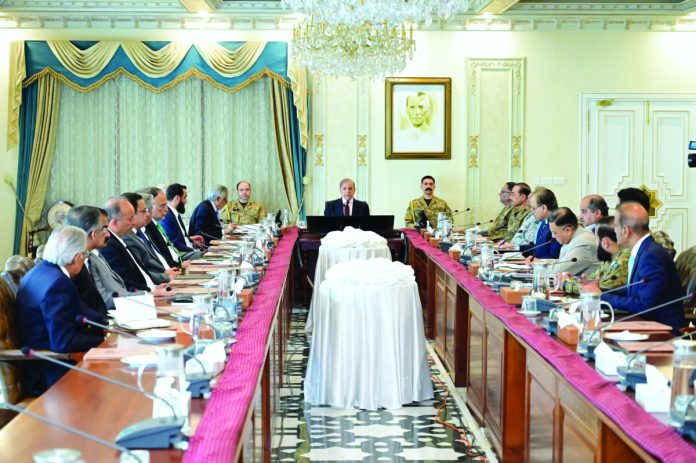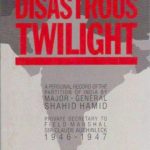Nusrat Mirza
In the controversy surrounding the Pahalgam terrorist attack on April 22, 2025, India blamed Pakistan without providing any proof. In an irresponsible and senseless act, and without calculating the consequences, India launched an attack on Pakistani soil on the night of May 6 and 7, 2025, killing three dozen innocent civilians.
Four mosques one in Ahmadpur Sharqia (East), one in Muridke, another in Muzaffarabad, and one in Kotli were damaged. The mosque in Ahmadpur Sharqia, Bahawalpur, once associated with Jaish-e-Mohammed leader Masood Azhar, was also damaged. In Pakistan, after Masood Azhar orchestrated two assassination attempts on General Pervez Musharraf, a ban was imposed on Jaish-e-Mohammed. Where is he now? Nobody knows either hiding in Afghanistan or elsewhere.
India launched a second attack in Muridke, which was once the center of Jama’at-ud-Dawah. Since the ban on the organization, there are no longer any camps for Kashmiri freedom fighters operating or receiving training there. The mosque staff was also martyred in this attack. The mosque in Muzaffarabad was likewise not being used as a hideout for freedom fighters. India was aware of all these but still deliberately risked a major regional war to assert dominance through these provocative actions. How can any nation attack a sovereign entity and claim to be targeting only specific objectives? Such aggression is rightfully seen as an invasion.
Consequently, on the night of May 6 and 7, 2025, Pakistan shot down six Indian fighter jets three Rafales, the pride of France, NATO, and Europe along with two Russian-made aircraft: A Sukhoi-30, MiG-29 and Mirage 2000. In addition, a brigade headquarters in Kashmir, along with several military posts, was completely destroyed. Pakistan also took control of several kilometers of Indian-occupied Kashmir.
It is worth noting that the Indian aircraft conducting the attacks did so from Indian airspace, and Pakistan downed them from within its own airspace. Pakistan used Chinese-made J-10C fighter jets and PL-15 missiles with great accuracy, showcasing the superior training and skill of PAF pilots. Their techniques were so effective they may become globally studied doctrines.
The aerial battle lasted approximately 50 minutes to an hour. This also led to a significant setback for France’s Rafale market. On May 8, 2025, India launched an attack using about 80 Israeli drones. All were destroyed one by one through a complex procedure, marking a major defeat for Israeli drone technology. Then, during the night of May 8 and 9, India used BrahMos missiles to strike remote areas of Pakistan, causing, however, some damage to two airbases.
In response, on May 10, 2025, at about 5:00 AM, Pakistan launched a full-scale counter attack Operation Bunyan-Um-Marṣooṣ named after a verse from Surah As-Saff in the Holy Quran, meaning “a fortified wall.” The operation involved “Fateh-1” missiles, targeting 26 Indian military bases from Leh and Ladakh to Indian Prime Minister Narendra Modi’s hometown in Gujarat, extending even further to the Rann of Kutch. Destroyed airbases included those in Udaipur, Pathankot, Jalandhar, Gujarat, and various installations in Rajasthan and Chandigarh.
Two storage facilities in Beas and Chandigarh housing BrahMos missiles the pride of India were completely destroyed, resulting in the loss of a significant number of missiles. Russia’s sophisticated S-400 defense systems were also rendered ineffective. Though initial reports indicated that 20 Indian soldiers were killed, though the actual figure may be higher.
Pakistan’s drones flew across regions from Delhi to all Indian border cities adjacent to Pakistan. These drones, primarily used for surveillance, effectively replaced the role once filled by Israel’s “Heron” drones. Pakistan disabled Indian radars, shot down 80 drones using indigenous technology, and maintained complete air superiority.
In this conflict, Pakistan employed cyber-freezing technology, stealth aircraft, and supersonic missiles, while also utilizing satellites. Most importantly, it effectively used its Full Spectrum Deterrence capability. The leadership and coordination between Pakistan’s Army, Air Force, and Navy by the grace of Allah became the deciding factor in defeating the enemy.
This defeat will be remembered for decades, and the lessons and techniques from this three-day war will be studied worldwide. The Prime Minister of India, in his devilish intent, nearly led his nation to destruction through a false flag operation. By Allah’s help, Pakistan’s armed forces launched such a powerful counterattack on May 10, 2025from 5:00 AM until 10:00 AM that India was forced to surrender. Indian officials and their puppet media were silenced and humiliated by the truth. India then appealed to Saudi Arabia, the United Arab Emirates, and the United States to mediate, fearing deeper strikes from Pakistan that could paralyze its defense systems.
Pakistan agreed to halt further attacks on the condition that India be agree to discussion on multiple issues including that of Kashmir issue. India, once unwilling to even hold talks with Pakistan refusing even to play cricket matches was now forced to negotiate. The Kashmir dispute was originally to be resolved under the Shimla Agreement, but now U.S. mediation became involved, marking a major diplomatic victory for Pakistan.
India had assumed Pakistan was isolated and internally weakened. It hoped to assert regional dominance, but instead, it undermined the credibility of Russian, French, and Israeli technology. While on the other hand Pakistan gained an edge over India in conventional warfare through the May 2025 war. It had been said that Pakistan was globally isolated. However, this war revealed the opposite. India appeared to be alone with no significant support. Even Israel remained silent. The U.S. and U.K. called for dialogue, while Pakistan received open support from China, Turkey, and Azerbaijan.
The world also came to understand that Pakistan had no involvement in the Pahalgam terrorist attack. Pakistan, once underestimated, emerged as a key global power. Its combat capabilities especially its air force were recognized globally. The demand for Chinese weapons and aircraft surged, as they outperformed Israeli, French, and Russian systems in the hands of skilled Pakistani operators. For perhaps the first time in centuries, Asian technology out shined Western technology. China capitalized on the situation by occupying several areas in India, such as Arunachal Pradesh, and renaming them. Meanwhile, internal corruption scandals surfaced in India regarding the purchase of Rafale jets specifically how much commission Prime Minister Modi and his associates had received.
Though the conflict between Pakistan and India has not officially ended as reports indicate that Israel has begun supplying India with advanced aircraft and missiles but after this three-day war, Pakistan emerged victorious, and India suffered deep humiliation. It, though in compulsion but, agreed to dialogue, and the Kashmir issue once again became an international flashpoint alongside the Indus Waters Treaty.
DG ISPR Lt. Gen. Ahmed Sharif Chaudhry rightly stated that if India revokes the Indus Waters Treaty, it will forfeit access to the waters of six rivers in Kashmir, as Kashmir remains a disputed territory.
The author is the chief Editor of the monthly Interaction.







